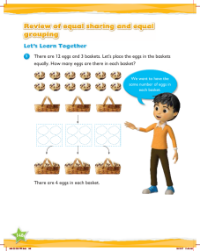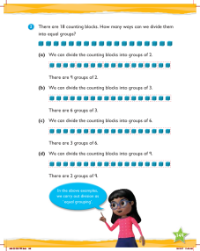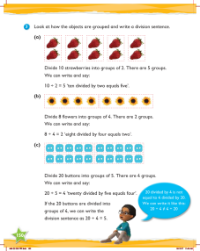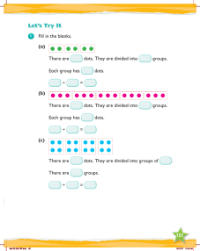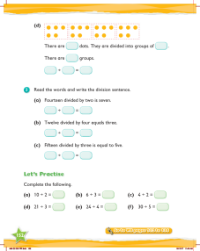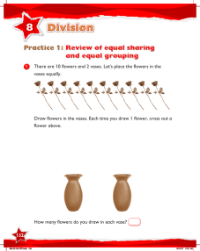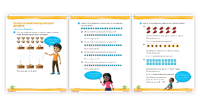Max Maths, Year 3, Try it, Review of equal sharing and equal grouping (2
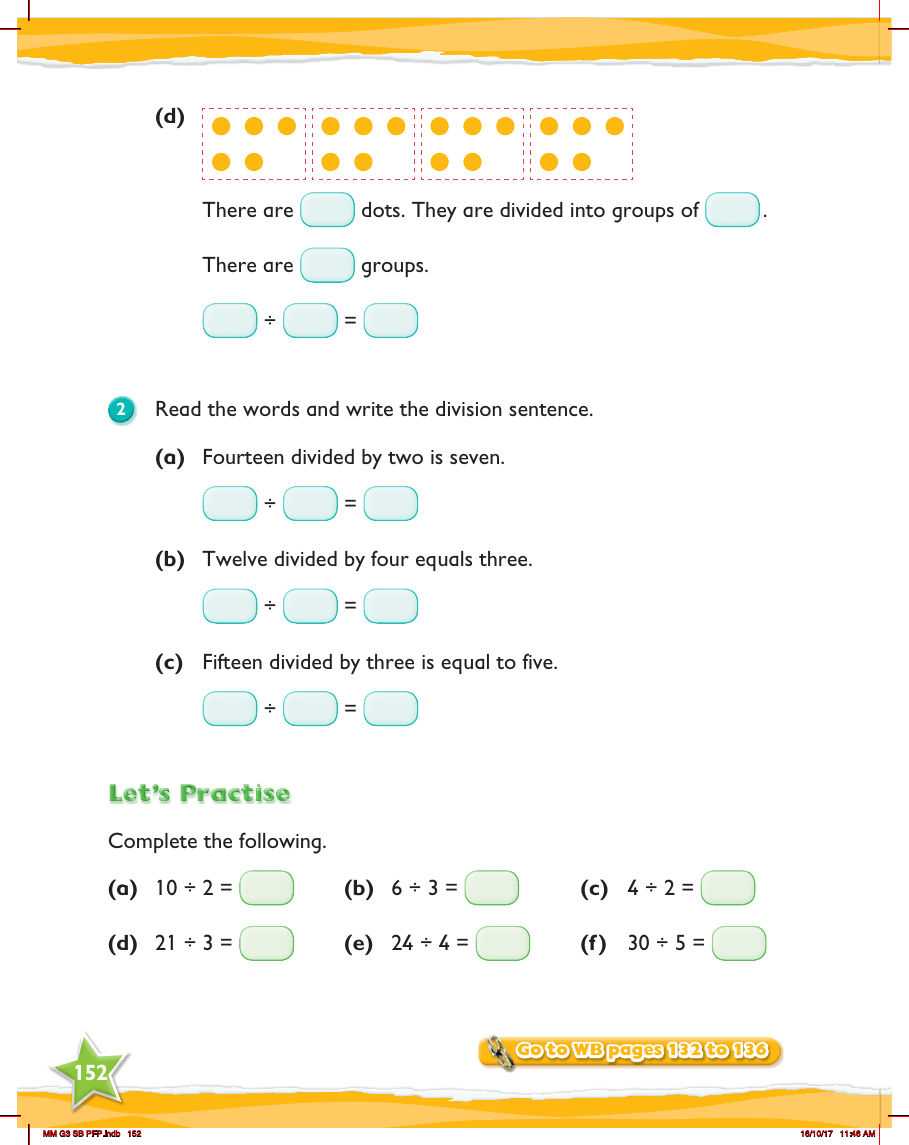
In this section of the Max Maths Year 3 workbook, students are invited to review and practice their understanding of equal sharing and equal grouping concepts. The exercise starts with a visual representation where a certain number of dots are divided into groups of an unspecified size. Students are then asked to translate this visual information into a division sentence, reinforcing the concept that division is the process of splitting a number into equal parts or groups.
The workbook further encourages students to read written division problems and convert them into mathematical division sentences. For example, "Fourteen divided by two is seven" becomes "14 ÷ 2 = 7". This activity is designed to help students associate the verbal expression of division with its corresponding numerical form. The practice continues with similar examples, such as "Twelve divided by four equals three" and "Fifteen divided by three is equal to five", which students must also convert into division sentences. To consolidate their learning, the 'Let’s Practise' section provides straightforward division calculations for students to complete, such as "10 ÷ 2 =", "6 ÷ 3 =", and "4 ÷ 2 =", progressing to slightly larger numbers like "21 ÷ 3 =", "24 ÷ 4 =", and "30 ÷ 5 =", allowing students to demonstrate their competency in equal sharing and grouping through division.
